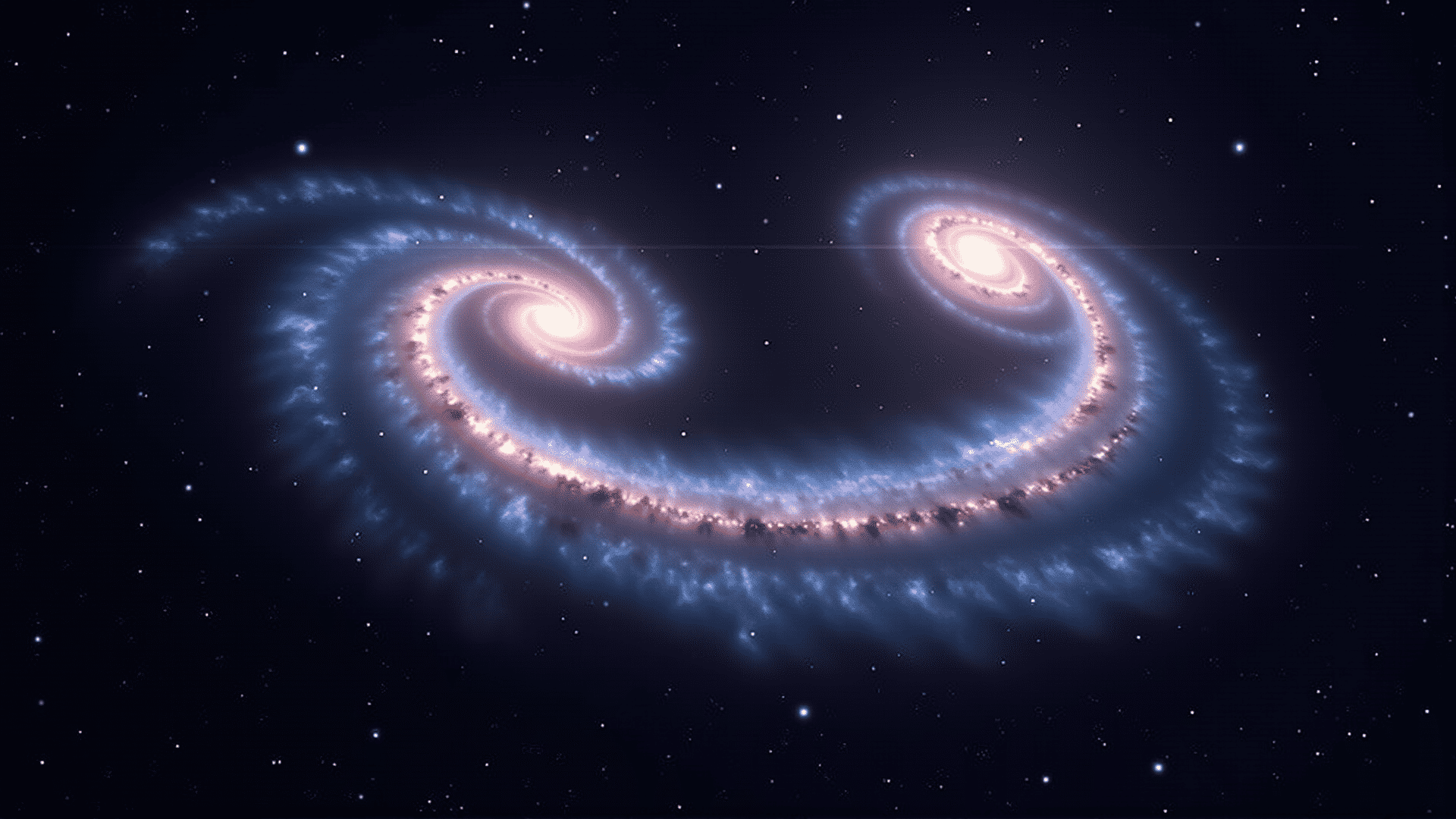In the vast expanse of the universe, galaxies perform an intricate and mesmerizing dance, revealing the cosmic choreography that governs the heavens. These immense structures of stars, gas, and dust are bound by the gravitational forces that drive their movements and interactions. Though we see them as static designs painted across the night sky, galaxies are dynamic entities constantly engaging in a cosmic ballet.
Galaxies come in various shapes and sizes, from spiral beauties like our own Milky Way to the more elliptical, irregular forms. Spiral galaxies, with their sweeping arms, often evoke images of pinwheels spinning in the depths of space. Their motion is fascinating, as the arms are not fixed structures but sites of ongoing star formation, influenced by density waves moving through them.
Interactions among galaxies are central to their evolution. When galaxies come into proximity, their gravitational fields can lead to dramatic changes. These interactions often involve elegant merging processes where two galaxies gracefully combine over billions of years. As they intertwine, they can create stunning visual displays known as tidal tails or bridges, reshaping each other's structures in a celestial exchange of stars and gases.
One of the most compelling aspects of galaxy interactions is their role in fueling the growth of supermassive black holes at their centers. As galaxies merge, material is funneled toward their cores, providing the energy required for these enormous entities to grow even more significant. In certain conditions, this feeding can trigger intense radiation known as active galactic nuclei, shining like cosmic lighthouses across the universe.
Galaxies also interact through less dramatic methods such as gentle gravitational tugs. These subtle dances can eventually lead to new alignments of stars and structure, gradually reshaping these cosmic entities without the fireworks of a direct collision.
Within clusters, galaxies are not solitary performers but part of larger groups bound by gravity. These clusters can contain thousands of galaxies, each participating in the cluster's overall rhythm. The interactions within such a cluster are not only between galaxies but also involve dark matter, an elusive component that acts as an unseen partner, holding the clusters together and influencing their movements.
The study of these dances provides researchers with insights into the fundamental properties of the universe. Observations using sophisticated telescopes have captured these dances in detail, offering glimpses into the history and evolution of galaxies over billions of years. Through these studies, astronomers can understand the life cycle of galaxies, the nature of dark matter, and even the underlying structure of the cosmos itself.
In witnessing the dance of galaxies, one can appreciate the beauty of nature on its largest scale. They remind us of the dynamic forces at work across the universe and the complex interactions that give rise to the cosmic wonders we observe. The dance of galaxies is a testament to the intricate and ever-changing nature of the universe, inviting us to observe and question the cosmos' many mysteries.
